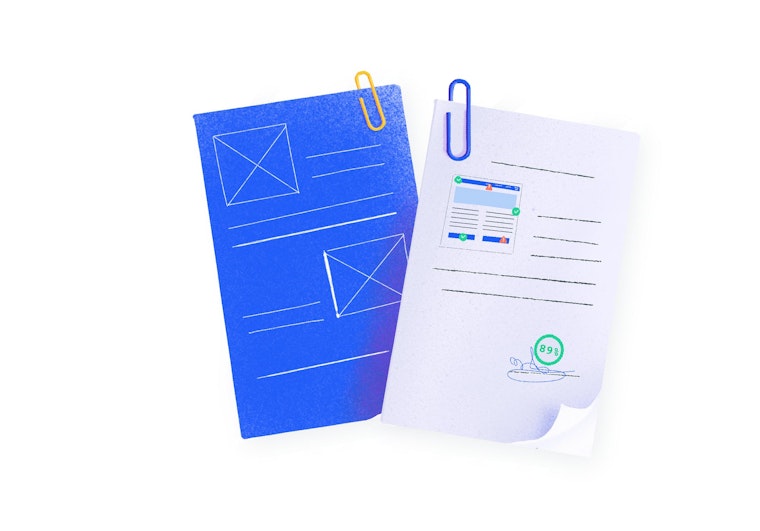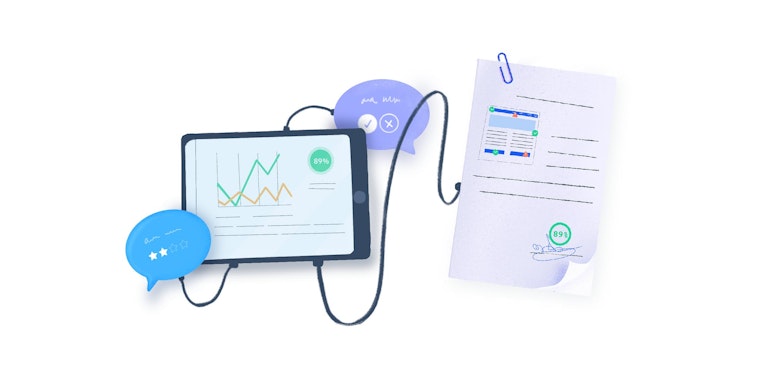

When a potential client asks for a design proposal, freelance designers can react in one of two ways:
This article is for people who embrace the second mindset. Because while it’s true that clients use competing design proposals to decide who they’ll hire for a project—so yours needs to stand out—they also provide a vital framework you can refer to throughout the project.
In other words, a solid proposal can act as a source of truth that protects you as a freelancer from a client’s goals or expectations shifting halfway through a project. And let’s face it, we’ve all been there.
One way to make your proposal rise above the competition and set the project on course for success? Include user research. As a vital part of the design process, making user research and testing part of your proposal immediately demonstrates the value your design will add for your prospective client.
Show them that the foundation of great design is understanding their users, and you’ll also get buy-in to do more user testing further down the line. Leave it out, and the client might see it as an optional part of the process—making it almost impossible for you to design user-centered solutions.
But before we dive into the details of how user research can elevate your design proposal, let’s remind ourselves of what a good proposal template should look like—and what it needs to achieve.
 illustration of two pieces of paper" />
illustration of two pieces of paper" />
A design proposal is a document or a series of slides that set out your plan for a design project. Normally requested by clients, it’s a way for them to compare the value that different designers are offering them. But value ≠ price. Branding expert Arek Dvornechuck explains:
The best fit for clients doesn't mean the least expensive option, or the best design portfolio. It means that you can move the needle for them and help them with something they need to get done.
So a solid design proposal template doesn’t need to show off your fancy design skills—or even any design skills at all. But it should clearly explain your client’s problem or objective, how your web design will help their business, and why you personally are right for the job.
And crucially, you need to show new clients that you’re the best option for their business in terms they understand. Remember, your client probably doesn’t know design. That’s why they’ve come to you.
But it’s also important to make one thing clear: design proposals don’t have to exist purely for your client’s benefit.
If you approach them the right way, they can guide the design process, keep the project scope in check, and align yours and your client’s expectations. So before you start a proposal, make sure to have productive conversations with the client on the goals, budget, and scope of the project. As designer Ran Segall says:
Your design proposal should never surprise a client.
Instead, it should be a clear, mutually agreed summary of what you both understand about the project.
Companies and individuals have so many options to choose from when looking for design services. Clients ask for design proposals because they want to compare your offer with those of other designers and find the best fit for the project.
A well-written design proposal clearly defines what you’ll be doing for your clients and how your proposed solution will address their needs. It allows you to show the value that you're offering and communicate that you're the right person for the job.
Also, a design proposal will help you and your clients set expectations from the beginning. Clearly stating what you'll deliver, when, and how much the service will cost is vital for the project's success.
So, with both your client’s and your own interests in mind, here’s what your proposal writing should cover:
Most standard proposal templates cover these bases. But what if you want yours to be above and beyond ‘standard’? Let’s talk about how user research can make your design proposal stand out—and guide your work on a project going forward.

There are many benefits of including user research in the proposal process. From helping you discover user needs to benchmarking the usability of the current design or competitors, user research can help you succeed. Here’s how.
As a designer, it’s your job to demonstrate to the potential client that there’s no such thing as great design without user research. Show this in the UX research plan, and your client will buy into this idea. Leave it until later, and it’ll be harder to secure time and budget for further user research when the time comes. Erika Hall from Mule Design Studio explains:
When research is defined as a type of work outside of design, it’s easy to define gathering evidence as something extra and find reasons not to do it.